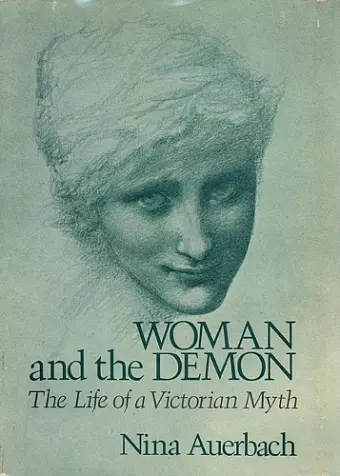Woman and the Demon
The Life of a Victorian Myth
Format:Paperback
Publisher:Harvard University Press
Published:14th Feb '84
Currently unavailable, and unfortunately no date known when it will be back

This is one of those extremely rare scholarly books on which the adjective 'seminal' can be bestowed without the slightest misgiving. It should not take long before the book will be acclaimed as one of the few major revaluations of Victorian literature and art. -- V.C. Knoepflmacher
Here is a bold new vision of Victorian culture: a study of myths of womanhood that shatters the usual generalizations about the squeezed, crushed, and egoless Victorian woman.
Here is a bold new vision of Victorian culture: a study of myths of womanhood that shatters the usual generalizations about the squeezed, crushed, and ego-less Victorian woman.
Through copious examples drawn from literature, art, and biography, Nina Auerbach reconstructs three central paradigms: the angel/demon, the old maid, and the fallen woman. She shows how these animate a pervasive Victorian vision of a mobile female outcast with divine and demonic powers. Fear of such disruptive, self-creating figures, Auerbach argues, produces the approved ideal of the dutiful, family-bound woman. The awe they inspire associates them with characters in literature, the only vehicles of immortality in whom most Victorians could unreservedly believe.
Auerbach looks at a wonderful variety of sources: Svengali, Dracula, and Freud; poets and major and minor novelists Carlyle, John Stuart Mill, and Ruskin; lives of women, great and unknown; Anglican sisterhoods and Magdalen homes; bardolatry and the theater; Pre-Raphaelite paintings and contemporary cartoons and book illustrations. Reinterpreting a medley of fantasies, she demonstrates that female powers inspired a vivid myth central to the spirit of the age.
A daring and important book of cultural criticism… Woman and the Demon is beautifully written and even moving. Undertaking no less than a subversive rereading of Victorian culture, Nina Auerbach attempts to make available to the 20th century certain aspects of that culture which we have learned to dismiss with contempt at great cost to ourselves… Briefly her thesis is this: Where feminist criticism has consistently exposed the repressive implications of the Victorian myth of woman as ‘angel in the house,’ that myth actually disguises another dominant but unformulated myth—the myth of woman as demonic, polymorphous, vital, dangerous and transcendent… She extends her study as comfortably to Dickens as to Brontë, to Robert Browning as to Christina Rossetti, to Thomas Carlyle as to Florence Nightingale; and she reads these writers on the terms traditionally offered. Yet she changes them for us irrevocably… [Her] argument is outrageous, provocative and convincing. -- George Levine * New York Times Book Review *
A fascinating study which engages the reader continually… [Woman and the Demon] makes us question again relations between art and life, literature and belief. -- Jennifer Uglow * Times Literary Supplement *
In her witty and incisive study of cultural myth—those systems of belief that flourish below the surface of an age in its popular literature and art—Auerbach…reconstructs the iconography of womanhood and the ways in which apparently complacent female types actually represented subversions of the power structure… This readable narrative makes an important contribution to our understanding of myth, womanhood and of social cultural history. -- Julia Epstein * Philadelphia Inquirer *
[A] brilliant revisionary study of the Victorian mythology of womanhood… Not only is Woman and the Demon lively to read, but it goes beyond the depressing images of female oppression to discover a seething energy that is another, and perhaps more liberating, truth. -- Adrienne Munich * Yale Review *
A study rich in intellectual probing, complex in interpretation, this is a major contribution to feminist criticism and a noteworthy reevaluation of the recent past. * Publishers Weekly *
This is one of those extremely rare scholarly books on which the adjective ‘seminal’ can be bestowed without the slightest misgiving. It should not take long before the book will be acclaimed as one of the few major revaluations of Victorian literature and art. -- V. C. Knoepflmacher
ISBN: 9780674954076
Dimensions: unknown
Weight: 408g
272 pages